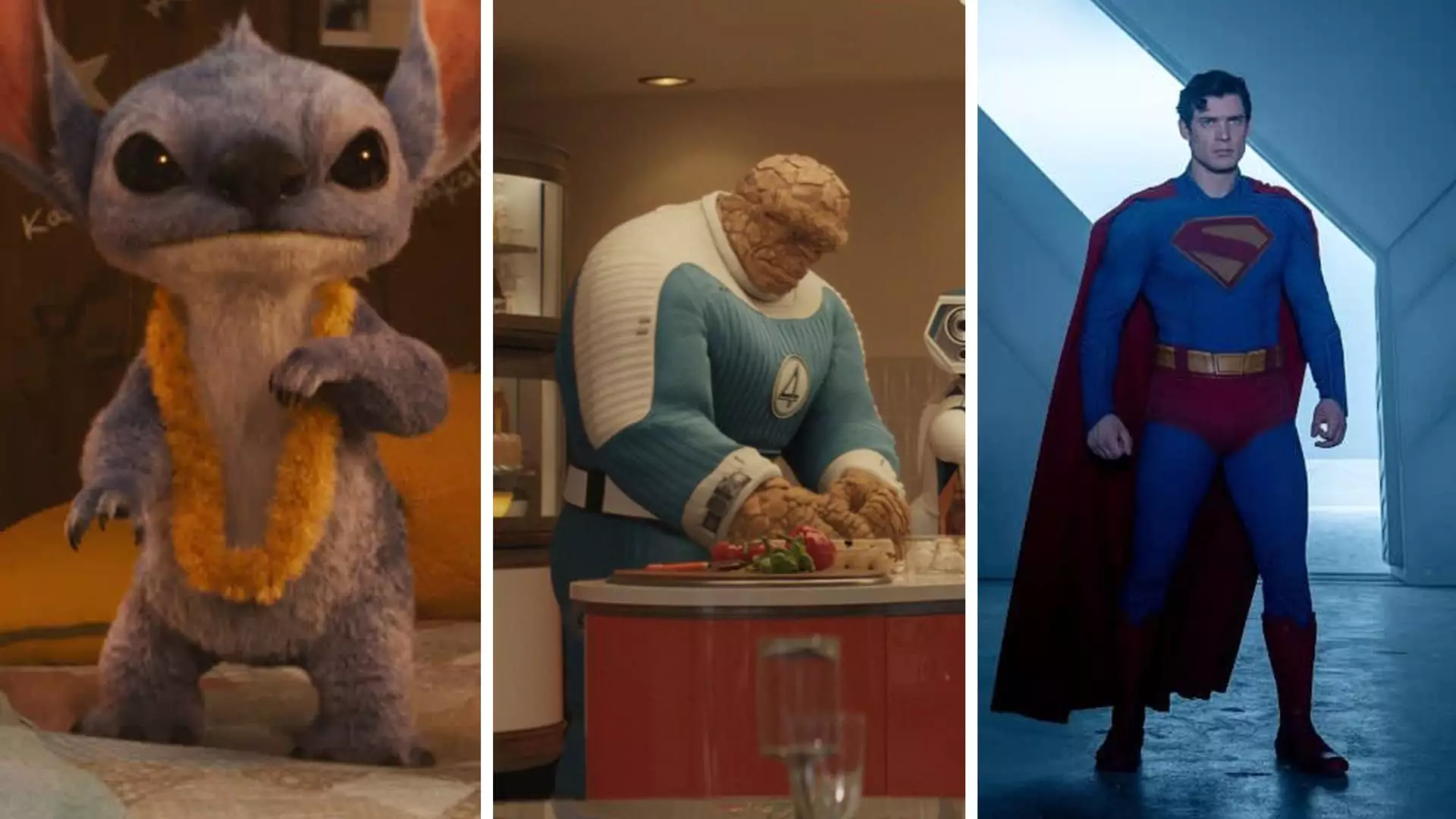For years, Hollywood has clung to the hope that blockbuster franchises and spectacle-driven movies could breathe new life into its faltering box office. The summer of 2024, seemingly, had glimpses of a potential rebound, but a critical look reveals a pattern of disappointment masked behind fleeting hits. Despite an increased overall revenue of approximately $3.75 billion, which is marginally above last year’s figure, this modest growth is no testament to a thriving industry. It signals, instead, a stagnation born out of overreliance on insignificantly divergent reboots and spectacle rather than meaningful consumer engagement.
The narrative that Hollywood yearns to promote—that these numbers signify a resilient market—is fundamentally flawed. The true story is one of consumer fatigue and market oversaturation. The industry’s heavy investment in franchise after franchise, often with underwhelming results domestically, shows that audiences are less willing to invest their time and money into what increasingly feels like recycled content. The enthusiasm for sequels and remakes has waned, as evidenced by the dismal performance of recent blockbusters like “Jurassic World” sequels or rebooted superhero franchises, which underperform compared to previous years. When mainstream hits struggle to cross the $350 million mark domestically, it exposes a grim reality: the retail magic of Hollywood spectacle is losing its luster.
Market Reality vs. Industry Narratives
This dilemma isn’t merely about movies underperforming; it exposes the systemic decline of Hollywood’s strategy to rely on franchise fatigue as a safeguard. It’s clear that the industry’s assumption—buffeted by optimistic projections—fails to recognize that contemporary viewers have grown more discerning and selective. What once was a guaranteed blockbuster now risks falling flat, regardless of its star power or CGI spectacle. The blockbuster model that Hollywood has championed—massive productions designed for global screens—continues to lose its foothold on the American market, where authenticity and originality are increasingly valued over spectacle.
Furthermore, the discrepancy between studios’ revenue projections and actual ticket sales signifies a disconnect between Hollywood internal optimism and consumer realities. The modest increase this summer, largely driven by a few successful releases such as Disney’s “Lilo & Stitch” remake and “Superman,” is a far cry from the pre-pandemic high water marks. Notably, these films, which are relatively modest successes in comparison to blockbuster standards, point to a broader consumer preference for quality, nostalgia, and novelty over overhyped franchise installments. As such, Hollywood’s investment in mediocre sequels and reboots may serve short-term financial gains but ultimately contributes to audience apathy and declining attendance.
The Shifting Consumer Landscape and Industry Responses
Analysts highlight that early summer momentum was driven by surprising success stories, but the latter part of the season has revealed discouraging trends. The industry’s narrative of a “resurgent” box office is increasingly detached from reality; rather, it is a reflection of the predictability of the theatrical window and the stubborn persistence of traditional model expectations. Audiences are no longer lining up en masse for unimpressive franchise installments, despite the industry’s efforts to portray these as must-see events.
Prominent industry leaders like AMC’s Adam Aron and Cinemark’s Sean Gamble have painted a cautiously optimistic picture, emphasizing that the second quarter and early summer were promising. Yet, these statements are often tinted with optimism that doesn’t match the facts. The reality is that, as summer ends, the typical seasonal slowdown is more pronounced, and without blockbuster staples, the fall season risks becoming a drought of audience interest. The potential hits expected in late November and December, like “Wicked: For Good” and “Zootopia 2,” might salvage the year’s overall performance, but they also highlight Hollywood’s dependence on a handful of franchise titles to buoy sagging numbers.
This reliance on upcoming tentpoles underscores a critical weakness: Hollywood’s failure to innovate and diversify its portfolio in ways that genuinely resonate with modern viewers. Instead of crafting new stories, studios continue to chase past glories and consumer nostalgia, which, as recent box office figures indicate, is no longer a sufficient strategy. The industry’s insatiable appetite for franchise continuity has made the theatrical experience predictable and less appealing.
The Center-Right Perspective: A Call for Market-Responsive Creativity
From a center-right, liberal-market perspective, the current trajectory of Hollywood’s box office reveals an industry out of touch with its consumer base—a large, diverse, and increasingly demanding audience whose preferences have evolved far beyond the simplistic spectacle of yesteryear. It is a failure of leadership and vision to continue pouring resources into franchises that no longer captivate or inspire audiences.
A truly resilient entertainment industry would recognize that sustainable success hinges on understanding market signals: the need for originality, diversity, and high-quality storytelling. Hollywood’s fixation on franchise formulae and spectacle has reached a point of diminishing returns. Instead of doubling down on tired franchises, studios should foster creative risk-taking, cultivate new voices, and invest in authentic storytelling that reflects pluralistic tastes and cultural shifts.
Moreover, the noted decline in blockbuster ticket sales rightly prompts a re-evaluation of business models. Viewing cinemas as primary entertainment venues in a digital age requires more than just heightened spectacle; it demands cultural relevance and innovation. As the dominant players in Hollywood continue to chase diminishing returns by overinvesting in franchises, there’s a growing need to embrace a more pragmatic approach—one that balances spectacle with substance and prioritizes consumer preferences over corporate inertia.
In the end, Hollywood’s future depends on whether it can adapt to these realities, resisting the temptation to rest on the laurels of past successes. Until then, the box office will remain a reflection not of a thriving industry, but of a creative enterprise struggling to reconnect with the very audience it claims to serve.


Leave a Reply